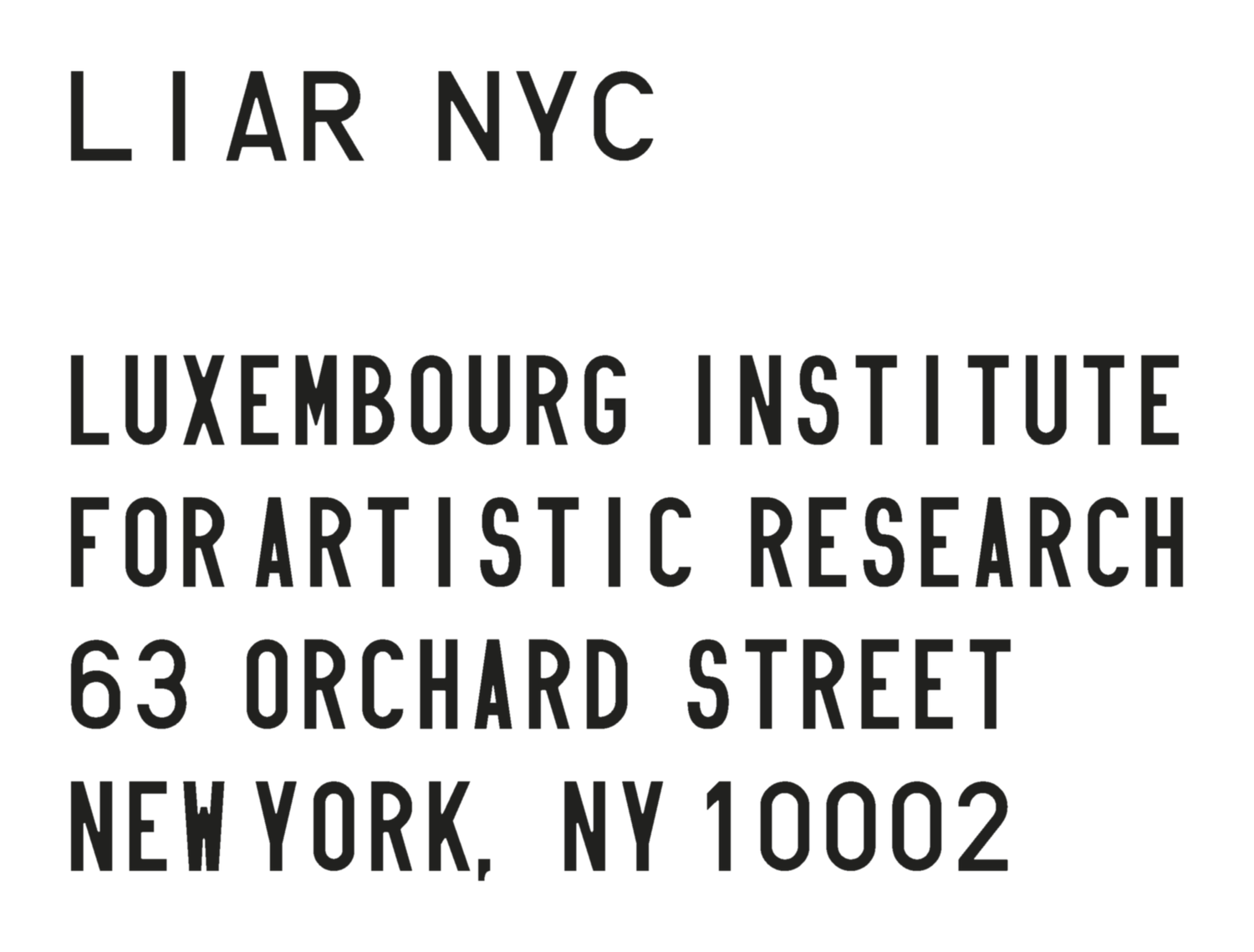OUR FIRST BOOK
NIKA SCHMITT
EGO/EGAL
ON THE OCCASION OF OUR FOURTH ANNIVERSARY, THE LUXEMBOURG INSTITUTE FOR ARTISTIC RESEARCH IS PLEASED TO ANNOUNCE OUR FIRST PUBLICATION, EGO/EGAL.
ÉGO/ÉGAL, a publication on the work of Nika Schmitt, is the first in LIAR’s new series of artist books. Meditations on artistic research, the practice of being in dialogue, and a work in and of itself, our first publication ties together the mission statement of LIAR, in all its creative abstraction, and presents it as a bound, mobile exhibition.
Except from “Introduction,” ÉGO/ÉGAL:
The idea for this publication grew out of an invitation to work with Nika Schmitt at Field Projects, in Chelsea, New York, in November 2023. Nika had been offered the gallery space for a 3-day period, and asked the Luxembourg Institute for Artistic Research to collaborate on an exhibition of her work. While in residence in New York, she had produced a number of new kinetic sculptures, and we were eager to work with her on showing them. Through studio visits and conversations, though, it became clear to us that Nika’s vision of and hold on her own work was independently strong, and that the role of curator, in the traditional sense, was not needed. Instead, we proposed an idea to extend the 3-day show into a longer project, one that encompassed discourse and writing as equal parts of the conversation, and through that, this publication was born.
The catalyzing thought behind the Luxembourg Institute for Artistic Research has always been to collaborate as artists with artists, and to create the opportunities for ourselves and others that we’ve always sought, and often failed, to find in pre-existing contexts. Artistic research itself is the gray space that exists between artist and curator, or artist and researcher. It’s an interdisciplinary approach to making, imagining, and sensing the subjective entangled within the analyzing, interpreting, and understanding of the objective; artistic research merges the two siloed disciplines into one modality of production and interrogation. In a sense, it’s a symbiotic relationship between the disciplines, existing both at the margins, the center, and, at times, without any form or frame altogether. In its abstraction, artistic research is limitless.
In Faux Pas: Selected Writings and Drawings, artist Amy Sillman writes about the origins of her zine, The O.G., a publication series she describes as “an art object” and also “a conceptual art project.”“I wanted to make sure that [my artwork] was situated right, so I decided to create my own context through writing.” The zine, Sillman writes, was an opportunity to “explain” her paintings; in The O.G., she shares personal research (among a multitude of other things) in which an alternative history —or herstory— of art is proposed. It’s “a chronicle of footnotes, a digest of all of the stuff you think about during the day, and a kind of anti-professional gesture to create space for that stuff… It’s a way of communicating really directly. Asking to have a direct conversation rather than withdrawing into the framework of the [artwork].”
Sillman’s motivations struck me as important because this very gesture, to provide a kind of guidebook, becomes an accessible entry point into art. At the same time, this gesture also generates discourse, the water wheel behind art production and all that follows it. Through providing a context, more people can be let in to explore, experience, and consider art, preventing the kind of frosty silence, or siloing effect that often shrouds exhibitions. And while this can be seen as a kind of intentionally minimalist approach, allowing viewers to engaged in fully unbiased interpretation, I don’t think it offers any kind of warm invitation. Through this contextualization, a metaphorical round table is engendered, one at which everyone can take a seat, and gather their thoughts. And if we all can all do that — take a seat, formulate an idea, a stance, a POV, or an experience, then don’t we all win?Beyond this, we hope to challenge the static idea of exhibitions existing within the four walls of a white cube for a set period of time, and then ending. The benefits and ramifications of this model seem limited. As Nika’s work is kinetic, so too is our approach to collaboration, curation, and the production of art and knowledge. Kinesis, or, a movement that lacks directional orientation and depends upon the intensity of stimulation, is a central part of artistic production. Without the constricting parameters of one particular kind of making or showing work, and reliant upon the strength of the artists mind and vision, LIAR is kinetic at its very core.



